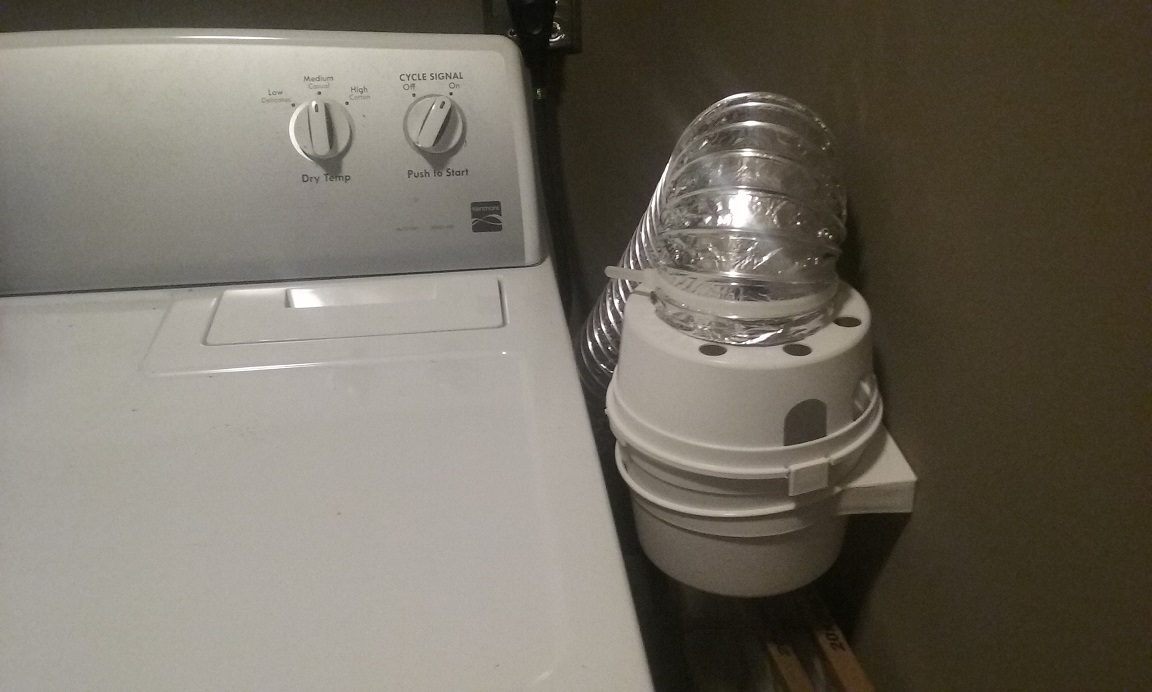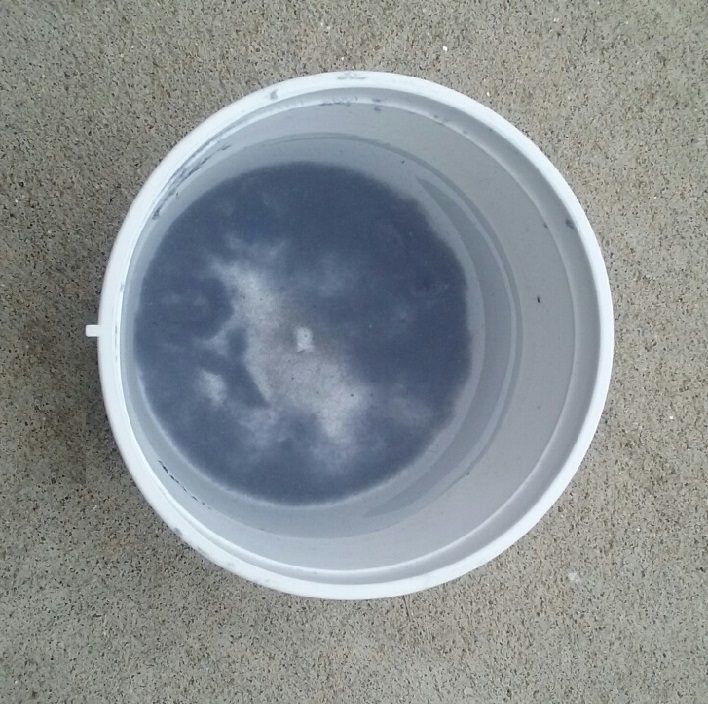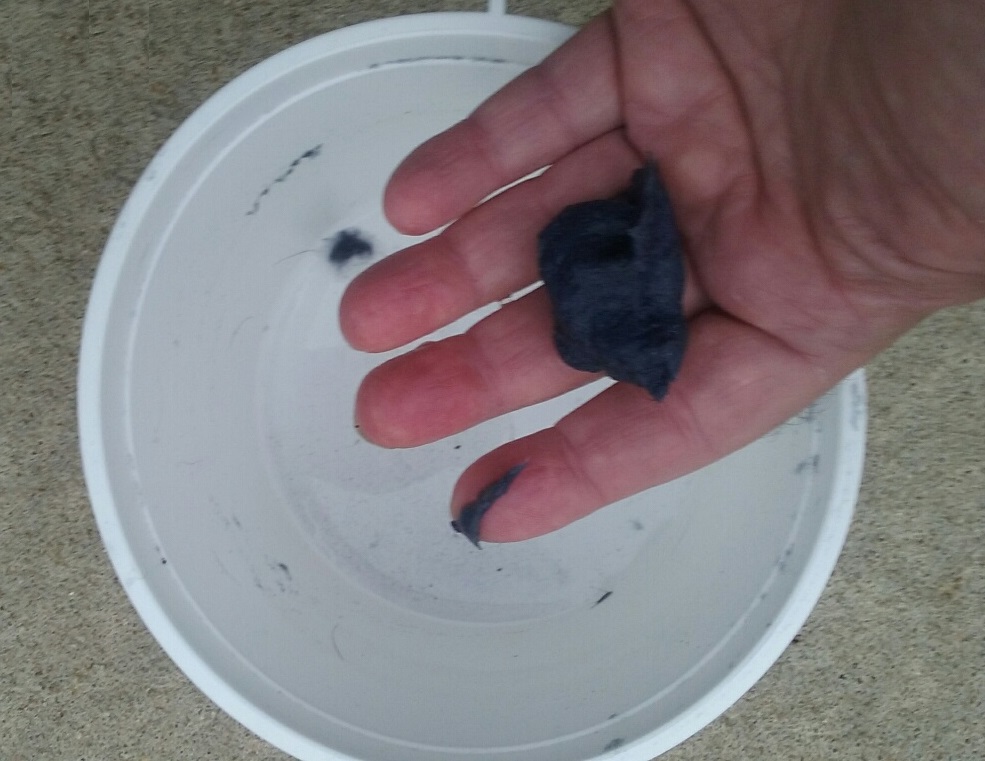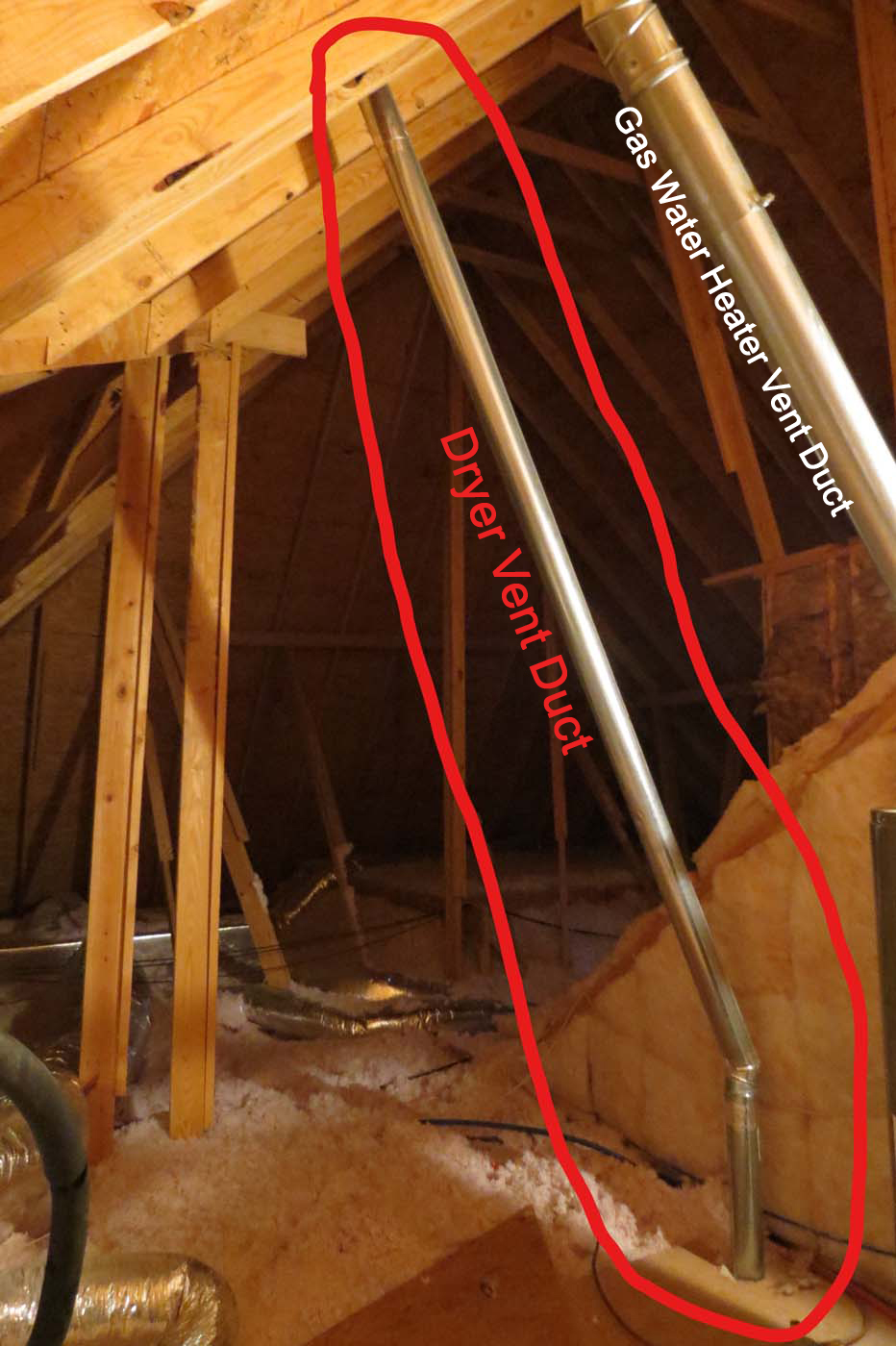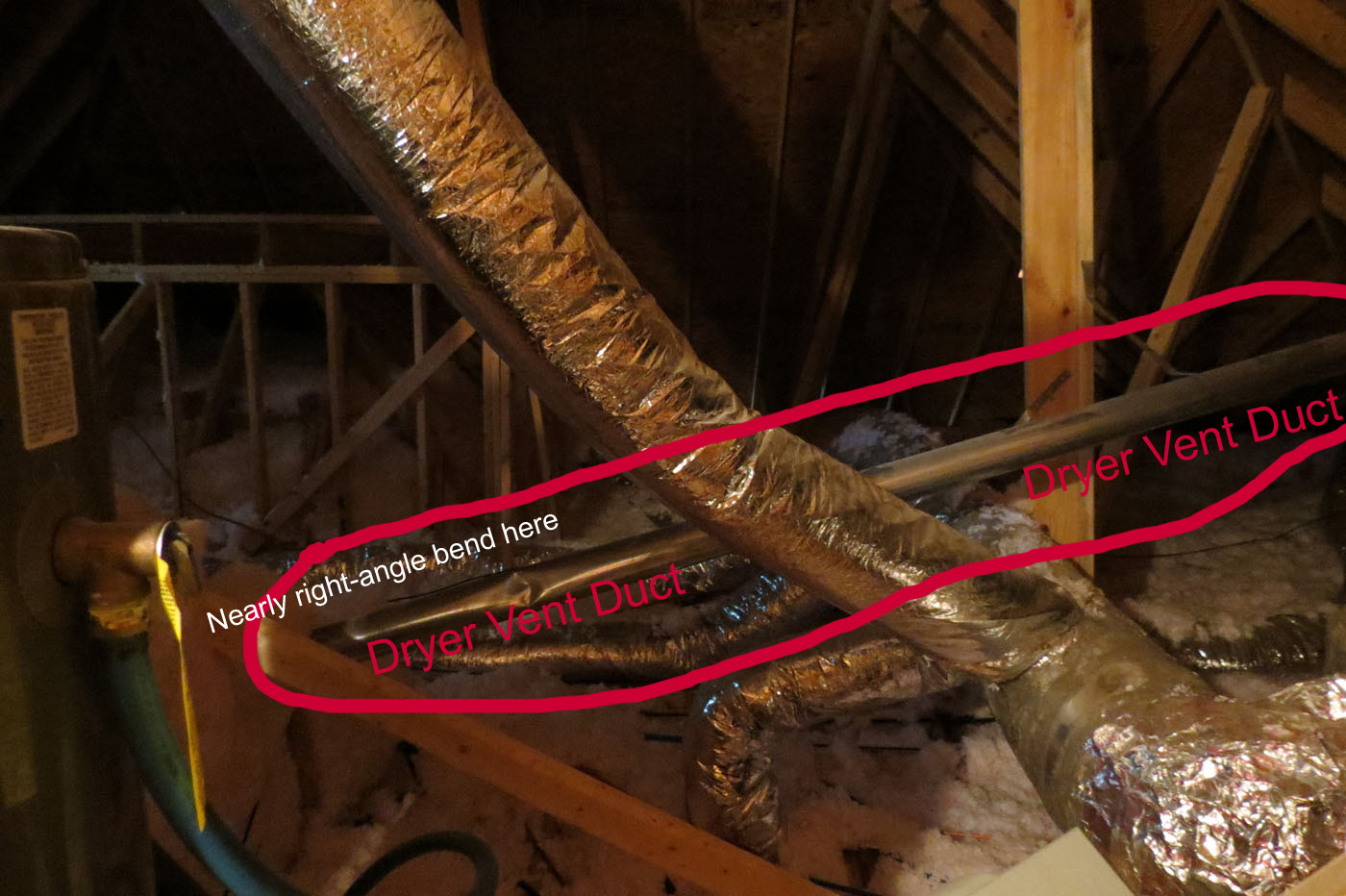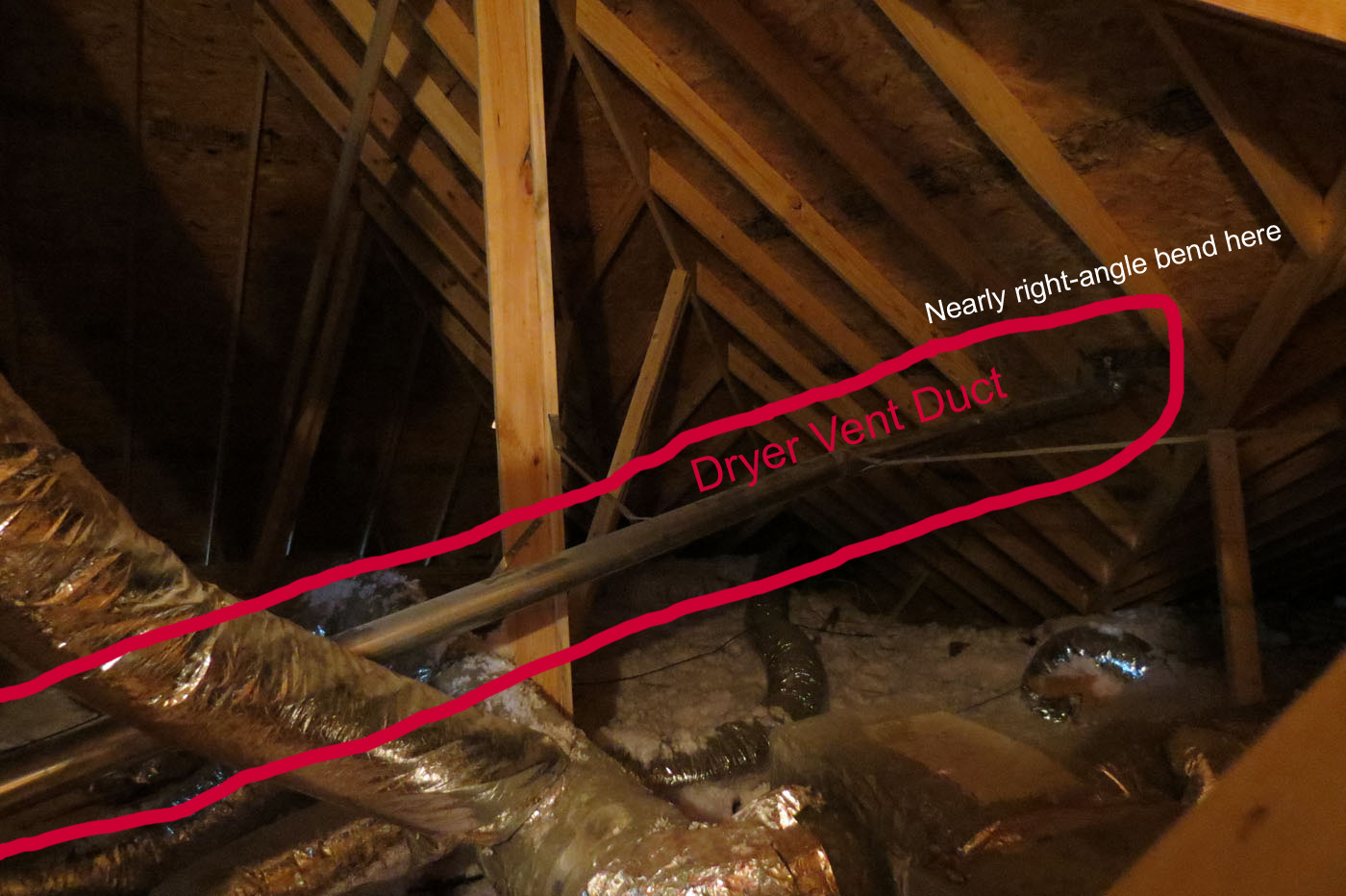|
Dryer Duct Extreme
Fire Hazard
After reading some neighborhood Facebook posts about cleaning out clothes dryer vent ducts, and seeing a news report of a house fire, I bought 24 feet of duct cleaning equipment (two 12 foot kits) from Home Depot (http://www.homedepot.com/p/Everbilt-Dryer-Vent-Cleaning-Kit-DVBRUSH12K-6HD/205047060). Our dryer vent is something like 21 feet long from near the floor of the laundry room up to the attic, then out the high roof. (See the "Attic 1" photo at the bottom of this page.) Our clothes have always taken way too long to dry (two, sometimes three dryer cycles), even when the house was brand new, and I had read it was because of the length of the duct work and the two bends in it. But I also thought the dryer might not be that good or that we were using two large or thick bath towels. Two overcome the long vent duct problem, there are fans you can install in the duct work but they are expensive and problematic anyway. I clean the flexible duct between the dryer and the wall once or twice a year, and there was some lint in it, but not like what was in the house duct today when I tried to clean the whole duct. A ton of lint (enough to fill two Walmart plastic bags) came out when I used the brush, and I was astonished at how much lint there was -- I don’t know why it had not already caught fire. And that was just what was dislodged and came down the vent. A bunch more also was pushed up ahead of the brush to the right-angle vent cap, even though I kept moving the brush back and forth as I worked it through the length of the duct. The picture shows a zoomed-in close up of the dryer vent opening on the roof after I used the brush kit. And that bulk of lint is apparently large and wedged real tight because my leaf blower duct taped for a seal to the other end of the vent could not blow it out either. I was not real interested in going up on the roof to finish the job or do this every six months or year. (To Home Depot's credit, they refunded my money for the cleaning kits when I explained the process and showed them this picture of the clogged vent cap, since the kits did not sufficiently clean the duct all the way out. I think the duct cleaning kit would work very well, however, for any duct opening or cap that at the end would let the lint be pushed through straighter. And, of course, if the outside end of the duct was reachable instead of high on a steep roof, the kit would probably be great.)  So I did more research and have bought (and just used) an indoor dryer vent system (just under $15 at Home Depot http://www.homedepot.com/p/Everbilt-Indoor-Dryer-Vent-Kit-TDIDVKHD6/203626526). It has really good reviews, and it worked great on the first four different loads of clothes, which dried much faster than even when the house was new. The only load that seemed to add heat to the laundry room was the large load that included four or five bath towels that I dried on the 'high' setting of the dryer. Also, previously the dryer's lint screen only caught lint in a small faction of its area, and there was lint behind it also. Since using this indoor vent kit, there is little or no lint behind the lint screen and the lint screen catches what seems to be the full complement of lint I was used to in a home that had a short straight duct through an outside wall. The pictures show the lint that got past the lint screen of my Sears Kenmore dryer and went into the vent where it was trapped in the water. That lint would have otherwise gone into the wall and attic duct if I still used it. (I have no relationship or affiliation with Home Depot, Sears, or Everbilt -- the company that sells the duct cleaning kit and the indoor dryer vent. I just think these are good, affordable products that can help prevent a disastrous house fire, and that everyone needs to know about the danger. I do wish the indoor vent unit and wall holder were made of metal or at least heavier plastic so that it would feel and be sturdier -- particularly the wall holder -- and the flexible duct that goes from the dryer into the indoor vent needs to be a couple of feet or more longer. I have bought but not yet installed a longer flexible duct. The flexible duct that comes with the indoor vent is said to be 5 feet long extended, but since the dryer duct outlet is at the bottom of the dryer, that is not sufficient length to manage placement of the indoor vent very well. I bought a 10 foot long flexible dryer duct to replace it with at some point.)
In a neighbor's house similar to mine, with the same floor plan but in mirror image, there is nearly a right angle bend in the duct where mine is about 45 degrees, and then there is another right angle bend in hers at the roof inside and a third one outside in the vent cap on the roof (see the "Attic 2" photos at the bottom of this page.), with an apparent third right angle bend in the vent cap. Her duct would be very difficult to clean out, it appears and seems even more prone to accumulate lint than mine.
|
